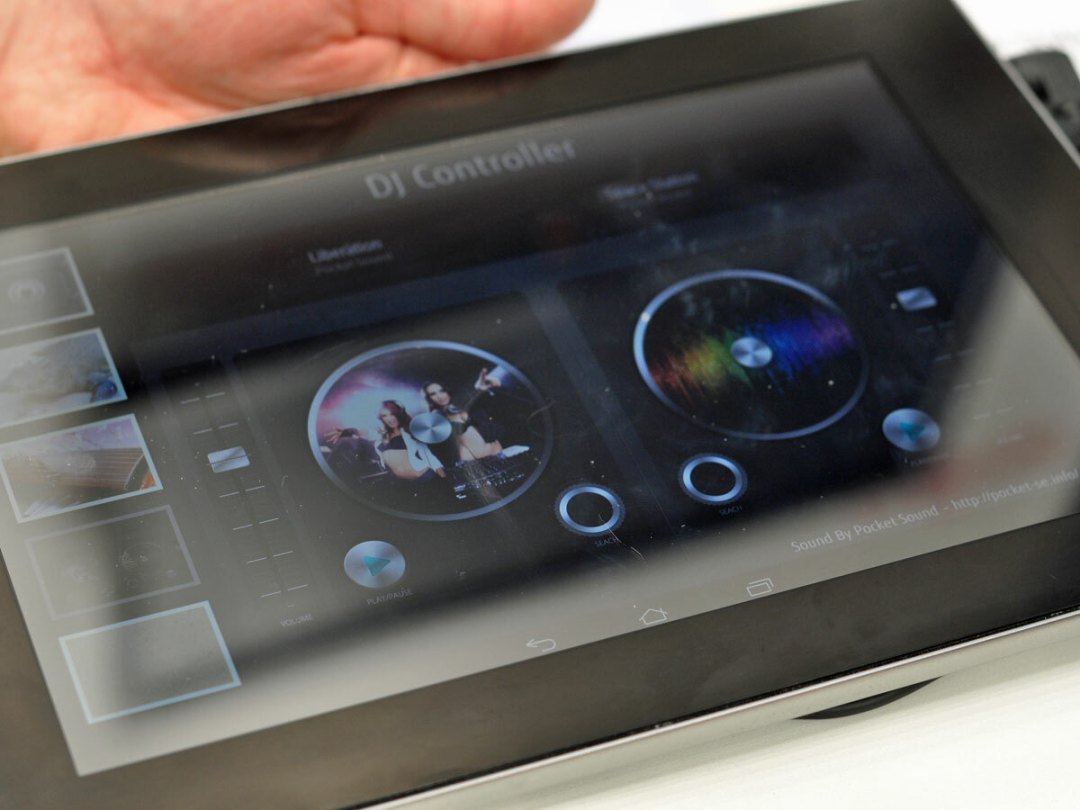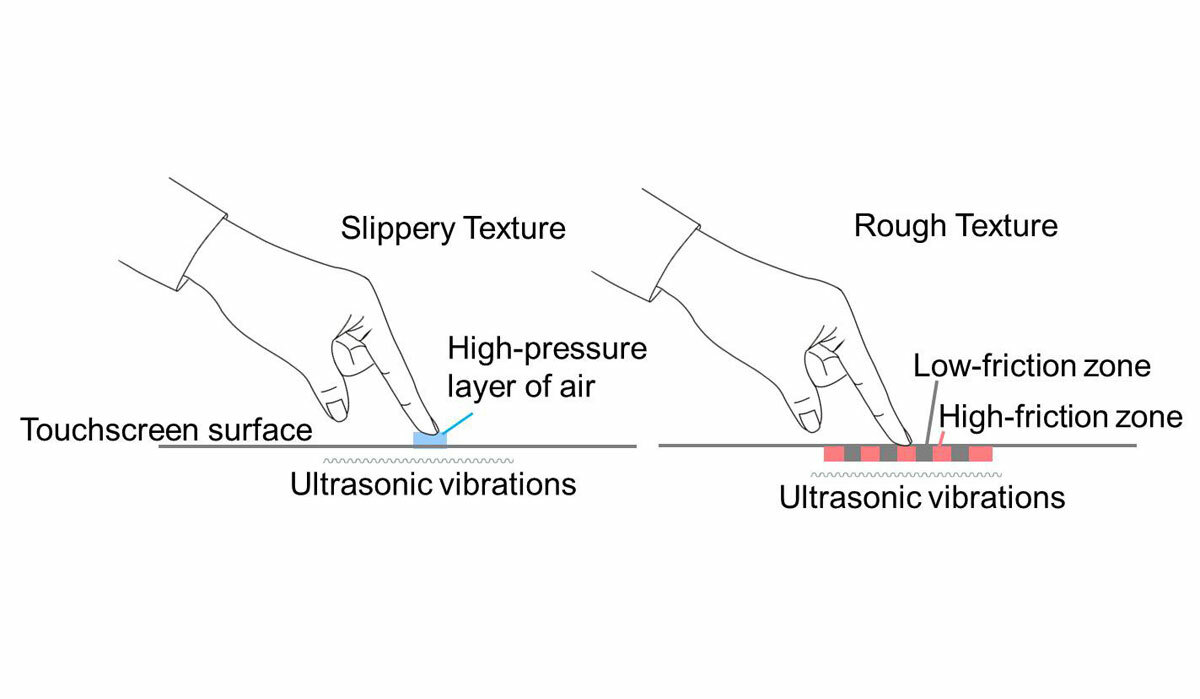Fujitsu’s tablet with ultrasonic haptic feedback is the most amazing thing at MWC
It really can replicate different levels of friction on the same touchscreen display

You simply have to try Fujitsu’s ultrasonic tablet to know what the fuss is about.
Although there have been dozens of attempts to enhance the touchscreen experience over the years, this is the first I’ve tried that does so effectively. It’s capable of truly incredible things.
The Fujitsu uses ultrasonic inducers on the screen to vibrate it at different frequencies, creating a cushion of high-pressure above the screen that can be varied based on your fingertip’s position on an X-Y axis. Match that with an onscreen image and you have something pretty magical – different ‘surfaces’ in images feel different to the touch.
Smoother than the smoothest glass

I ran through a series of demos, starting with two images of elastoplast-like bands, one split down the middle to show two different surfaces, the second with three horizontal lines bisecting it. The top of the first elastoplast felt more slippery than any touchscreen I’ve used before (the ultrasonics can make the screen feel smoother than it is in real life), but the bottom slowed my finger almost to stopping, such was the change in friction. In the second elastoplast I could feel the bumps as I rubbed my finger down the screen.
Other demos included a slick-feeling pair of DJ decks, an image obscured by rough ‘sand’ that could be rubbed off, a strokable crocodile and, my favourite, a Japanese zither that allowed me to pluck the strings individually.
Such is the power of the ultrasonics that a paper receipt placed on the other end of the strings bounced as I ran my finger over them.
Very much a prototype

Aside from the feeling of different surfaces, the ultrasonic inducer also buzzes and clicks faintly at different pitches based on the type of surface you’re touching. In many ways the demo is a little rough around the edges – the tablet needed to be plugged in to work, too, which suggests that either the demo eats a lot of power, or the prototype tablet is jury rigged together and the ultrasonic emitters aren’t hooked up to the tablet’s battery.
The technology currently works only with a single point of contact, too – the whole screen reacts to that point of contact, and feedback can’t be more accurately localised – but it’s very early days and will undoubtedly evolve. Down the line, a version that could replicate a two-thumb control pad on screen would transform mobile gaming.
Fujitsu’s track record with bringing its technology experiments to market, either in its own products on licensed to other vendors, is excellent – about 90% see manufacture. It hopes this one will hit retail in 2015.
Honestly, that’s excellent news – this is a technology everyone will want to get their hands on.
READ MORE: MWC 2014 – all the biggest news from Mobile World Congress



